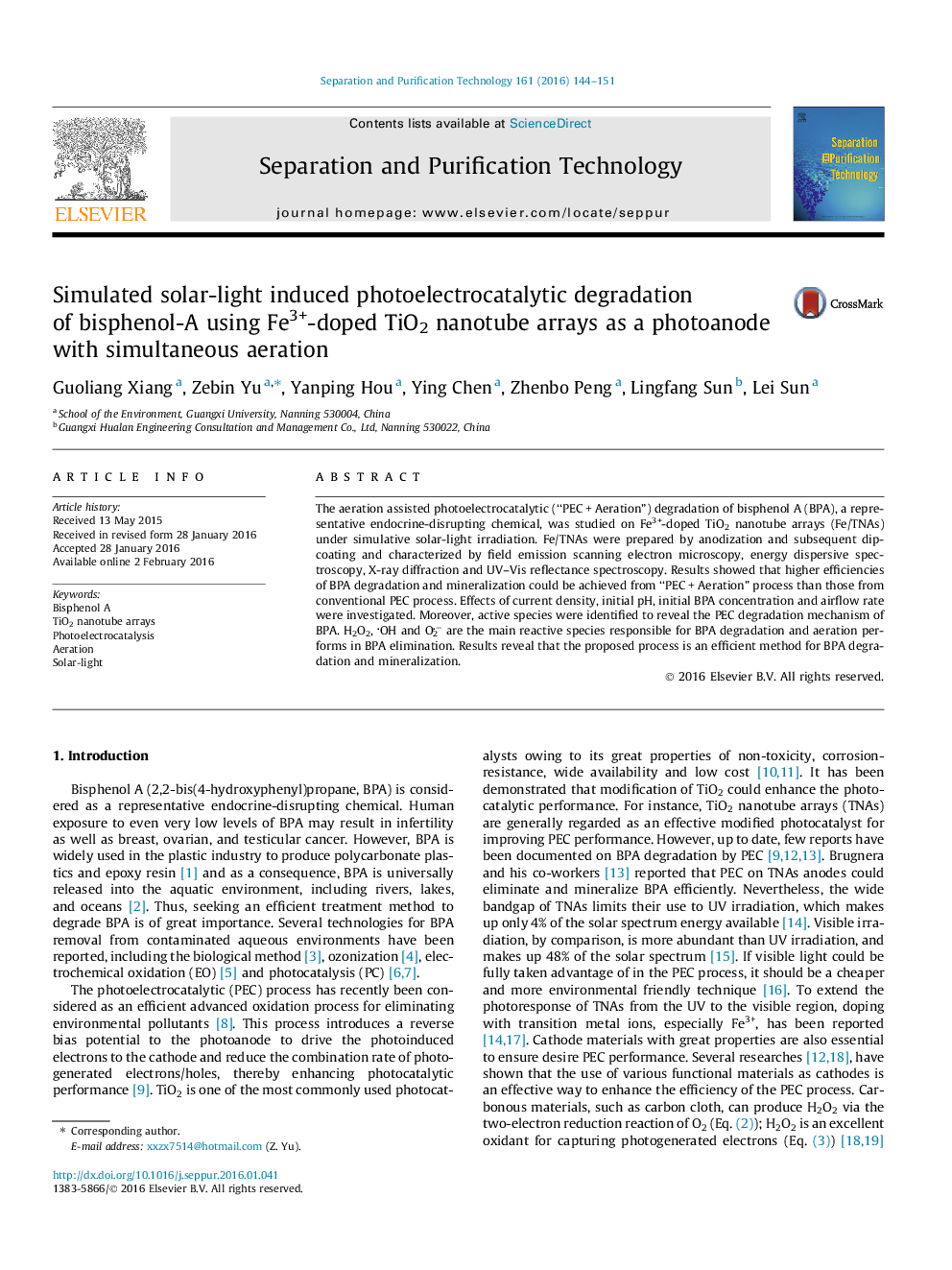| Article ID | Journal | Published Year | Pages | File Type |
|---|---|---|---|---|
| 640007 | Separation and Purification Technology | 2016 | 8 Pages |
•Aeration boosts the PEC process.•Simulated solar light induced “PEC + Aeration” was efficient for BPA removal.•A possible mechanism of “PEC + Aeration” degradation of BPA was proposed.
The aeration assisted photoelectrocatalytic (“PEC + Aeration”) degradation of bisphenol A (BPA), a representative endocrine-disrupting chemical, was studied on Fe3+-doped TiO2 nanotube arrays (Fe/TNAs) under simulative solar-light irradiation. Fe/TNAs were prepared by anodization and subsequent dip-coating and characterized by field emission scanning electron microscopy, energy dispersive spectroscopy, X-ray diffraction and UV–Vis reflectance spectroscopy. Results showed that higher efficiencies of BPA degradation and mineralization could be achieved from “PEC + Aeration” process than those from conventional PEC process. Effects of current density, initial pH, initial BPA concentration and airflow rate were investigated. Moreover, active species were identified to reveal the PEC degradation mechanism of BPA. H2O2, OH and O2− are the main reactive species responsible for BPA degradation and aeration performs in BPA elimination. Results reveal that the proposed process is an efficient method for BPA degradation and mineralization.
